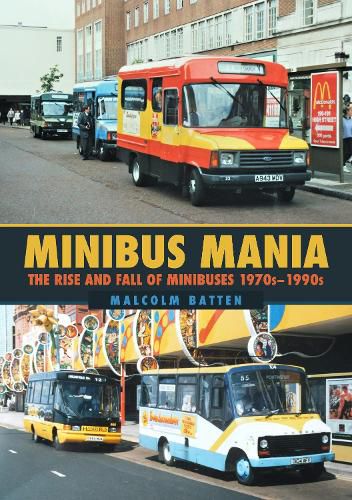Readings Newsletter
Become a Readings Member to make your shopping experience even easier.
Sign in or sign up for free!
You’re not far away from qualifying for FREE standard shipping within Australia
You’ve qualified for FREE standard shipping within Australia
The cart is loading…






There have always been small buses used by bus companies for a variety of reasons, but in the 1970s a number of companies employed van-derived minibuses on experimental services such as Dial-a Ride schemes. These were small-scale operations.
From around 1984 the majority of British bus companies started buying minibuses in bulk. They began replacing full-size vehicles and soon whole town local networks were being converted to their use. At first these continued to be on small, van-derived chassis - Ford, Freight-Rover and Mercedes-Benz - seating around sixteen passengers, but soon larger, purpose-built vehicles began to appear from companies sometimes unfamiliar to the British bus market. There were also attempts to produce ‘midibuses’ - larger than a minibus but smaller than a full-size bus.
By the mid-1990s the boom had come to an end. Larger vehicles started to replace many of these minibuses. Although modern accessible minibuses are still produced and still have a role to play, it is a far cry from their heyday.
This book looks back at the rise and fall of the minibus in British bus services.
$9.00 standard shipping within Australia
FREE standard shipping within Australia for orders over $100.00
Express & International shipping calculated at checkout
There have always been small buses used by bus companies for a variety of reasons, but in the 1970s a number of companies employed van-derived minibuses on experimental services such as Dial-a Ride schemes. These were small-scale operations.
From around 1984 the majority of British bus companies started buying minibuses in bulk. They began replacing full-size vehicles and soon whole town local networks were being converted to their use. At first these continued to be on small, van-derived chassis - Ford, Freight-Rover and Mercedes-Benz - seating around sixteen passengers, but soon larger, purpose-built vehicles began to appear from companies sometimes unfamiliar to the British bus market. There were also attempts to produce ‘midibuses’ - larger than a minibus but smaller than a full-size bus.
By the mid-1990s the boom had come to an end. Larger vehicles started to replace many of these minibuses. Although modern accessible minibuses are still produced and still have a role to play, it is a far cry from their heyday.
This book looks back at the rise and fall of the minibus in British bus services.